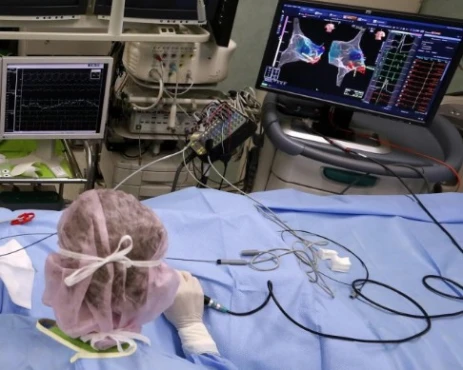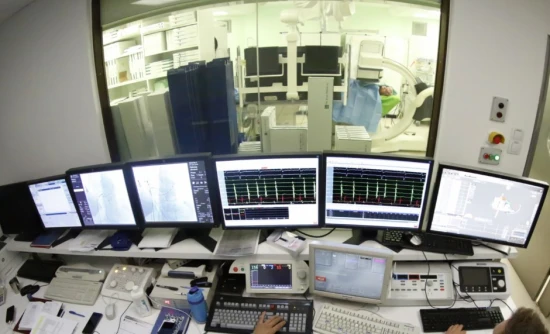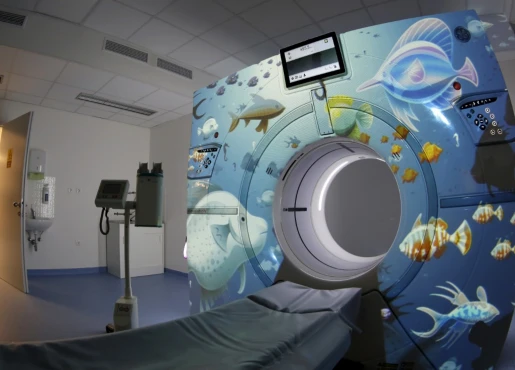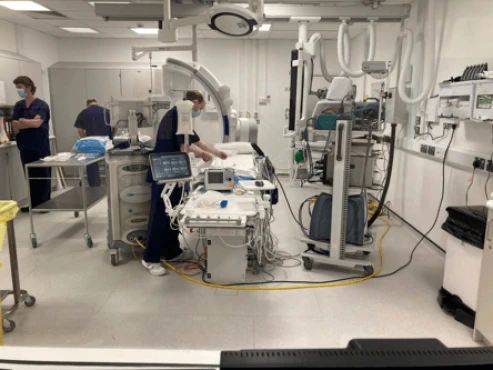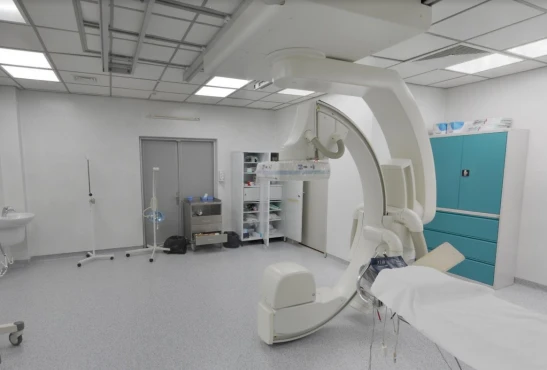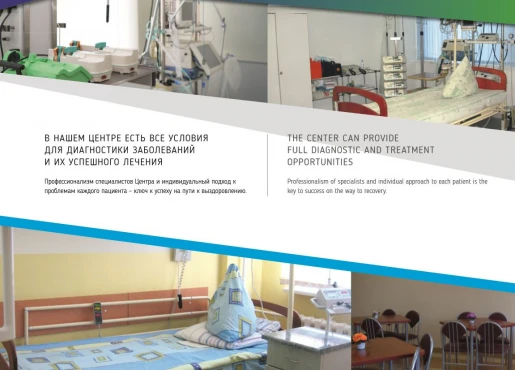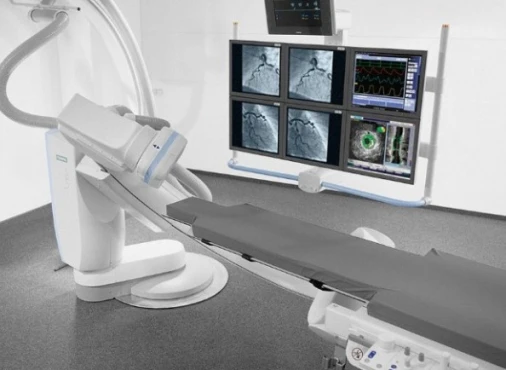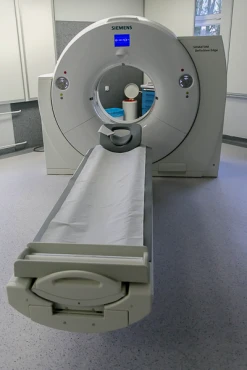Clinical picture of AHF
Acute heart failure is a condition in which the symptoms of a malfunctioning heart quickly appear or worsen (the heart ceases to properly perform its primary function of pumping blood around the body), and the patient needs urgent medical attention.
Below we will analyze in detail the clinical picture of the disease, its classification, and also briefly discuss the causes of this pathology.
This condition can occur both in asymptomatic patients and in people who already have chronic heart failure (CHF).
The origin of the disease
The causes of acute heart failure can be a number of pathological conditions, namely:
- The so-called acute coronary syndrome (ACS). This condition, as well as coronary heart disease, are very important in the context of the analysis of clinical signs of acute heart failure.
- Hypertensive crisis (excessive increase in blood pressure).
- Arrhythmias (with increased heart rate and conduction disturbances) causing severe bradycardia.
- Pulmonary embolism (PE).
- Dissection of the aorta.
- Cardiac tamponade (accumulation of fluid around the heart that prevents normal contraction).
- Various types of cardiomyopathy (mechanical or electrical dysfunction of the heart).
- Complications of surgical interventions.
- Tense pneumothorax (accumulation of air in the pleural cavity).
- Exacerbation of chronic heart failure.
- Infections, including infective endocarditis and myocarditis (damage to the inner layer of the heart - endocardium - and heart muscle - myocardium).
- Metabolic and hormonal disorders (eg, thyroid disease, adrenal tumor).
- Pulmonary hypertension, etc.
Often the acronym CHAMP is used to reproduce the root causes of acute heart failure:
- C (acute Coronary syndrome) - acute coronary syndrome;
- H (Hypertension emergency) - hypertensive crisis;
- A (Arrhythmia) - tachyarrhythmia (for example, ventricular flutter) or bradycardia (decreased heart rate);
- M (acute Mechanical cause) - an acute mechanical cause (for example, trauma);
- P (Pulmonary embolism) - pulmonary embolism.
The most common cause, especially in the elderly, is coronary artery disease. In young people, dilated cardiomyopathy, cardiac arrhythmias, congenital and acquired heart defects, myocarditis predominate.
Clinical course of acute heart failure
The symptoms of this pathology can be divided into two groups, depending on which ventricle is affected.
- Stagnation in the systemic circulation (right ventricular failure) is manifested by the following symptoms:
- peripheral edema - swelling of the sacrum, ankle joint;
- enlargement of the jugular veins;
- soreness in the epigastrium due to enlargement of the liver;
- in more severe cases - the accumulation of fluid in the serous cavities (pleura, peritoneum, pericardium), as well as anasarca - an extreme degree of edema syndrome, more characteristic of chronic heart failure. With it, generalized edema, fluid retention in the body, and lack of urination are observed.
- Stagnation of blood in the pulmonary circulation, which is also called left ventricular failure with pulmonary edema. Symptoms of left ventricular failure include manifestations of the respiratory system, namely:
- rapid breathing and shortness of breath, which can also be in a sitting position;
- wheezing over the pulmonary fields.
Separately, symptoms are distinguished with a decrease in cardiac output (peripheral hypoperfusion). They occur less frequently than manifestations of stagnation. Among them are:
- easy fatigue and weakness;
- confusion of consciousness, drowsiness;
- pale, cool, moist, and sometimes bluish skin;
- threadlike pulse;
- decrease in pressure and urine volume.
The patient will also show symptoms of the underlying disease causing the AHF. For example, with a myocardial infarction, the patient will complain of severe chest pain, a feeling of fear of death, he may have loss of consciousness, lack of breathing and blood circulation.
European classification of acute heart failure
Experts from the European Society of Cardiology (ESC) recommend that patients be classified according to what are known as hemodynamic profiles. First, the doctor must determine the presence or absence of stagnation in the systemic circulation. Conclusions are drawn primarily from a physical examination (sometimes supplemented by laboratory tests). As a result, the patient can be "warm and wet", "warm and dry", "cold and wet", "cold and dry". Depending on the person's hemodynamic profile, the doctor will prescribe the appropriate treatment.
Options for the course of acute heart failure
The disease can proceed as:
- Exacerbation or decompensation of chronic heart failure - symptoms of blood stagnation in the systemic and pulmonary circulation.
- Pulmonary edema.
- AHF with high blood pressure. With this type, the doctor can detect signs of both heart failure and hypertension, but the contractile functions of the left ventricle will be preserved. Increased heart rate and spasm of blood vessels are also common. The patient may be in a state of normal fluid balance in the body or mild overhydration, often with signs of pulmonary edema without signs of cardiovascular insufficiency in the systemic circulation.
- Cardiogenic shock. In this case, the patient is found to have insufficient blood supply to the body tissues (hypoperfusion), while the systolic blood pressure is less than 90 mm Hg. Anuria or oliguria, cardiac arrhythmias are also observed, pulmonary edema, as well as other tissues and organs, rapidly develops.
- Isolated right-sided acute heart failure, the symptoms of which do not include pulmonary edema, but this disease may include increased pressure in the veins of the neck and an enlarged liver.
- AHF due to the occurrence of acute coronary syndrome, which most often occurs in heart failure in conjunction with arterial hypertension.
Killip and Kimball classification of acute heart failure
This classification is widely used in clinical practice to determine the severity of the pathology and the prognosis for the patient. It was developed for AHF during a recent myocardial infarction. The classification is based on clinical symptoms and changes on chest x-ray and contains four stages of AHF.
Stage 1 - no heart failure: there are no clinical signs of cardiac decompensation.
Stage 2 - heart failure: stagnation of blood in the lungs, manifested by moist wheezing, mainly in the lower pulmonary fields.
Stage 3 - severe heart failure: pulmonary edema or wheezing throughout the pulmonary fields.
Stage 4 - cardiogenic shock: hypotension (systolic blood pressure less than 90 mm Hg) and features of peripheral hypoperfusion: oliguria (decrease in the volume of daily urine), cyanosis (cyanosis of the skin) and profuse sweating.
Diagnosis of the disease
In most cases, after examining the patient, the doctor may suspect the presence of acute heart failure. Additional diagnostic tests are used to identify causes and complications, and to differentiate AHF.
The following laboratory tests can be performed:
- general and biochemical blood tests (including determination of the level of creatinine, urea, liver enzymes and glucose);
- gasometry (determination of oxygen and carbon dioxide content in blood);
- determination of the level of troponin, natriuretic peptides, D-dimer, sodium and potassium.
Instrumental studies include conducting:
- ECG: there may be rhythm and / or conduction disturbances;
- chest x-ray: venous congestion in the pulmonary circulation, pulmonary edema, an increase in the shadow of the heart are often found;
- echocardiography: almost always performed in patients with cardiogenic shock if complications of myocardial infarction or aortic dissection are suspected.
With ACS, coronary angiography is used to assess the state of the vessels of the heart.
Disease prognosis
Further patient management and complications of this pathology depend on the cause of AHF and the results of treatment.
Factors that worsen the prognosis are:
- increasing the concentration of brain natriuretic protein and natriuretic peptide type B in the blood;
- if the patient has renal failure;
- increased levels of liver enzymes (ALT, AST, etc.);
- low blood pressure and insufficient sodium in the blood.
Summary
Acute heart failure (AHF) is a pathology in which rapidly worsening or emerging symptoms of heart failure occur (congestion in the pulmonary and / or systemic circulation, decreased cardiac output, cardiogenic shock). Most often, AHF occurs as an exacerbation of chronic forms or a complication of ACS.
There are four types of hemodynamic profiles for this disease, which helps the doctor to choose the right treatment tactics.
References:
- Ponikowski, Piotr et al. “2016 ESC Guidelines for the diagnosis and treatment of acute and chronic heart failure: The Task Force for the diagnosis and treatment of acute and chronic heart failure of the European Society of Cardiology (ESC). Developed with the special contribution of the Heart Failure Association (HFA) of the ESC.” European journal of heart failure vol. 18,8 (2016): 891-975. doi:10.1002/ejhf.592.
- Harrison`s Principles of Internal Medicine 19/E (Vol.1). Dennis Kasper, Anthony Fauci, Stephen Hauseret all. McGraw-HillEducation 2015 ISBN: 0071802134 ISBN-13(EAN): 9780071802130.
- Interna szczeklika - duży podręcznik. Medycyna praktyczna. 2021. ISBN 9788374306522.








